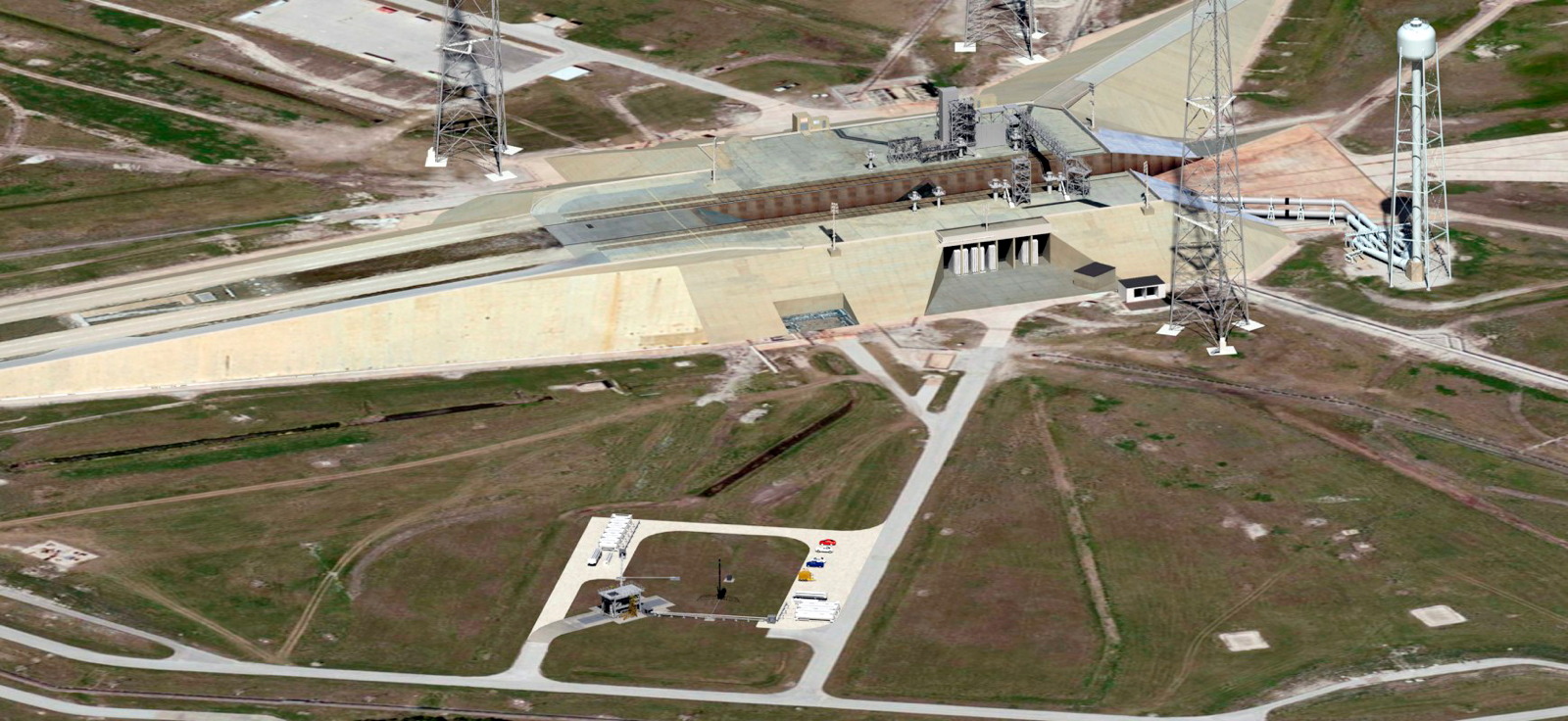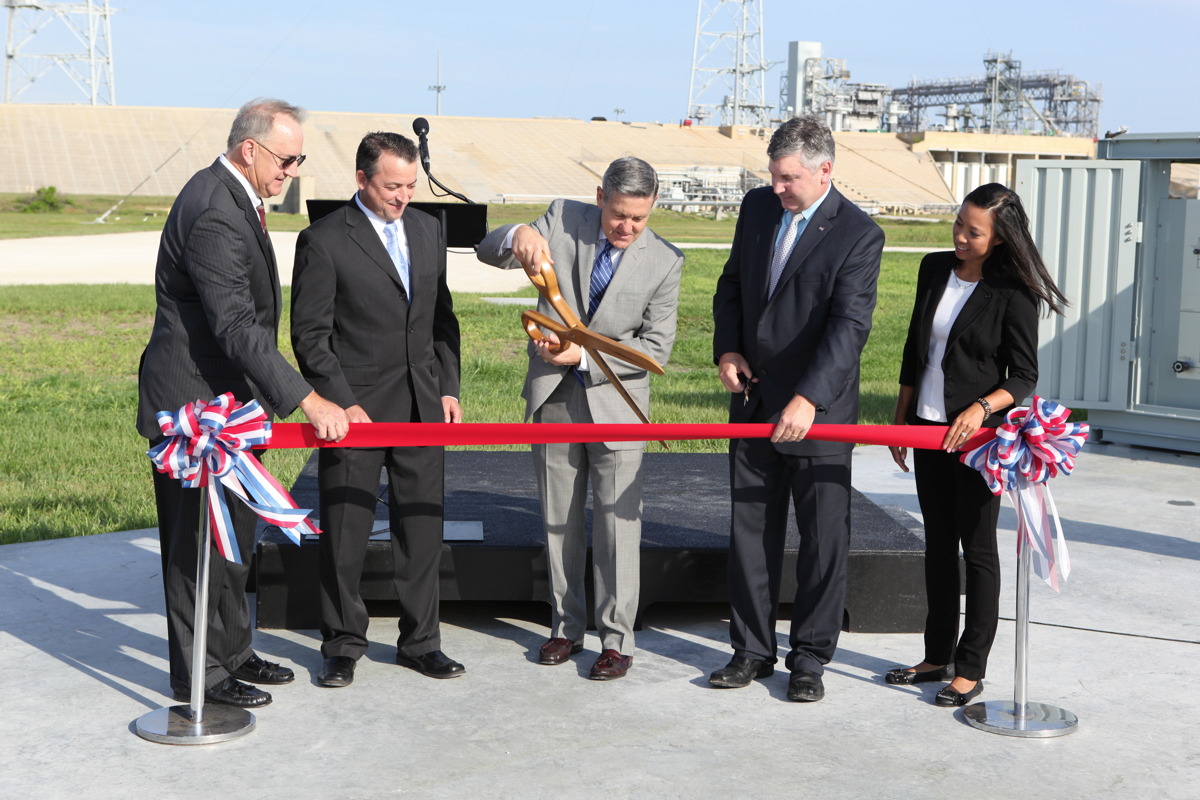New NASA Launch Pad for Small Rockets Is Open for Business

CAPE CANAVERAL, Fla. — A new NASA launch pad for small rockets has opened for business to customers hoping to send satellites into the final frontier.
Designated as Launch Pad 39C, the new pad at NASA's Kennedy Space Center here is located adjacent to historic Launch Pad 39B — the launch site of both the Apollo and space shuttle programs, and the future homeport for NASA's next big rocket, the Space Launch System. NASA hosted a ribbon cutting for the new launch pad, known officially as the Small Class Vehicle Launch Pad, on July 17.
"This is absolutely great, to designate a new pad within the confines of Pad 39B," Kennedy Space Center Director Bob Cabana, a former astronaut, said during the event. "I'm looking forward to having customers here in the not-too-distant future making use of this outstanding facility." [Photos: Small Rocket Launches of 2015]
NASA's new rocket launch pad cost about $900,000 to build, with construction beginning in January and wrapping up in June. The pad features a concrete slab 50 feet wide and 100 feet long (15.2 by 30.5 meters).
At its core, Pad 39C is essentially a customizable concrete slab. It is designed to allow customers to use their own rocket mounts and ground system support. A NASA-designed launch stand and universal fueling system — designed to primarily support liquid oxygen and liquid methane, as well as other fuels such as RP-1 — are also included.
But to Scott Colloredo, director of Kennedy's Center Planning and Development, the potential of Pad 39C goes beyond the concrete slab it offers for launches. "The key here is this is really what a launch site for a small class launcher needs to look like," he said. "It's lean, it's mean and it's clean."
The construction of this new pad will allow smaller companies to break into the aerospace market, NASA officials said.
Get the Space.com Newsletter
Breaking space news, the latest updates on rocket launches, skywatching events and more!
At approximately one-tenth the size of a traditional launch pad, Pad 39C is designed to support launch vehicles weighing up to 132,000 lbs. (60,000 kilograms) including rocket, payload and fuel. Rockets launching from Pad 39C would carry payloads of no more than 1,000 lbs. (450 kg) and produce no more than 200,000 lbs. (90,000 kg) of thrust.
"The small-class market is here, as the demand for that kind of launcher is increasing," Colloredo said.
So what kind of payloads might launch from the new pad? Small satellites known as cubesats are increasingly popular with commercial corporations, researchers and universities right now, NASA officials said.
With a current backlog in cubesat research, having a dedicated launch site for small vehicles will enable more of the small satellites to get off the ground. Right now, a smaller satellite has to hitch a ride to orbit as a secondary payload on a large rocket, and the companies cannot control the trajectory or timing of the launch. However, with the opening of a dedicated site servicing smaller rockets, companies will have more control over their launches, NASA officials said.

In an effort to reduce costs and provide better coverage, some commercial companies are transitioning to multi-satellite constellations versus one big, bulky satellite. Just as electronics have become more compact as technology improves over time, satellites have become smaller.
"It's like a cellphone," Colloredo said. "First they're big and bulky. In a lot of ways, satellites are getting smaller, leaner, and so are the electronics inside.”
Colloredo said about a dozen companies have shown interest in the site, although none have formally committed at this point. Launch Pad 39C is expected to be ready to accommodate launches beginning in late 2016 or early 2017.
Follow us @Spacedotcom, Facebook and Google+. Original article on Space.com.
Join our Space Forums to keep talking space on the latest missions, night sky and more! And if you have a news tip, correction or comment, let us know at: community@space.com.

Amy Thompson is a Florida-based space and science journalist, who joined Space.com as a contributing writer in 2015. She's passionate about all things space and is a huge science and science-fiction geek. Star Wars is her favorite fandom, with that sassy little droid, R2D2 being her favorite. She studied science at the University of Florida, earning a degree in microbiology. Her work has also been published in Newsweek, VICE, Smithsonian, and many more. Now she chases rockets, writing about launches, commercial space, space station science, and everything in between.









